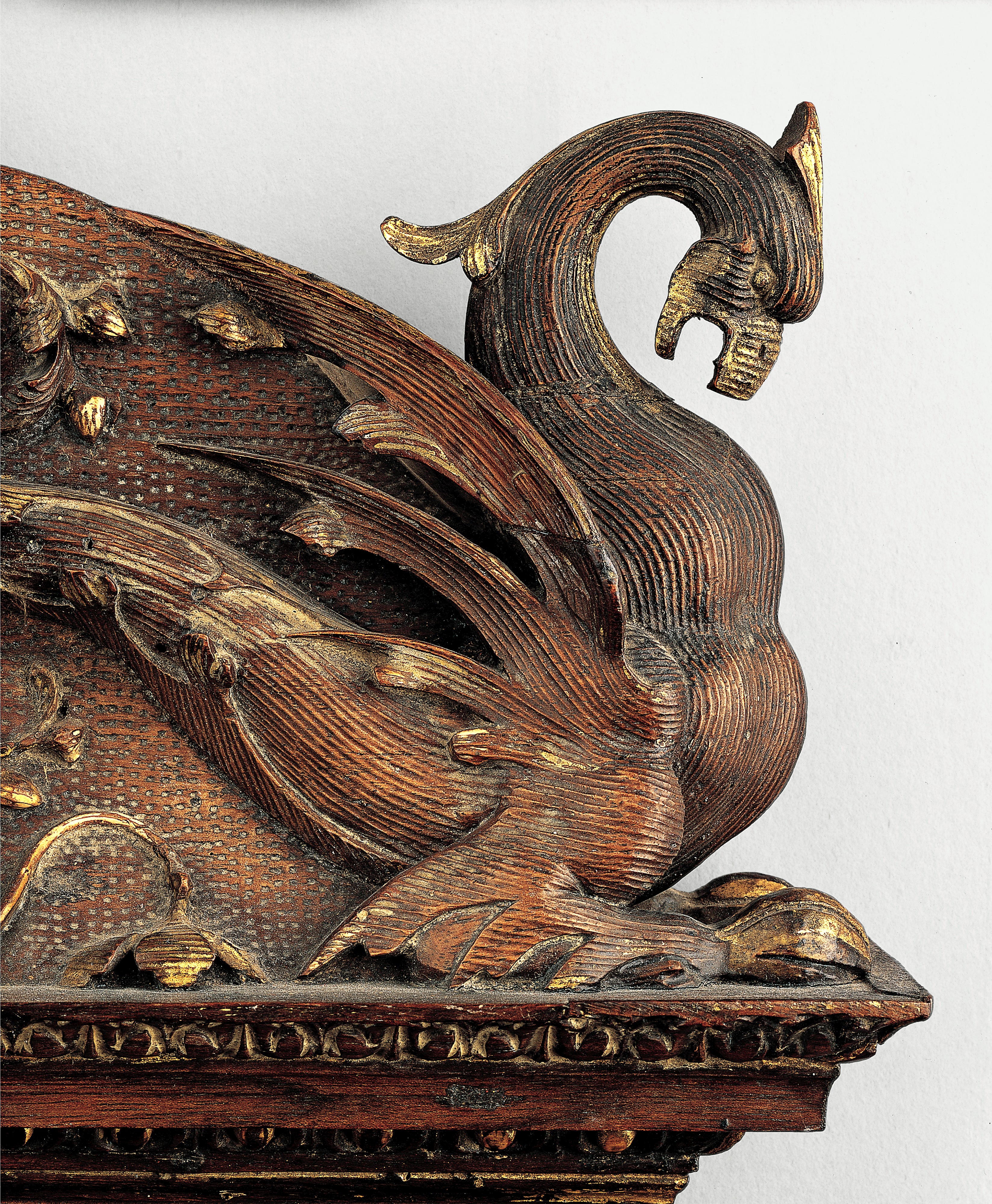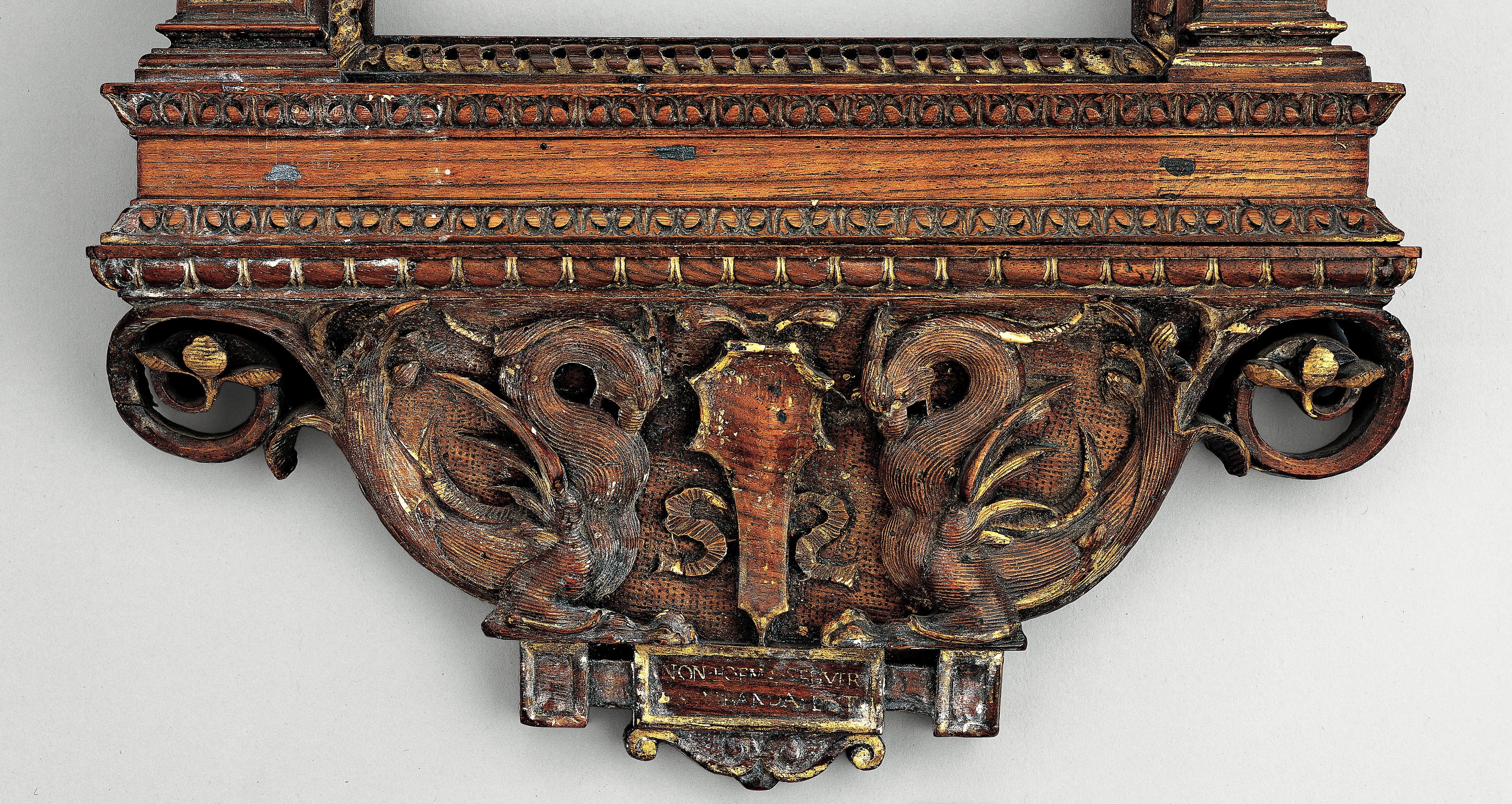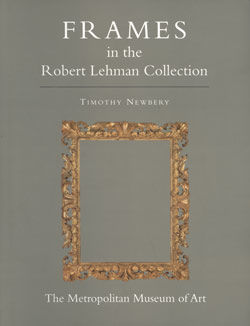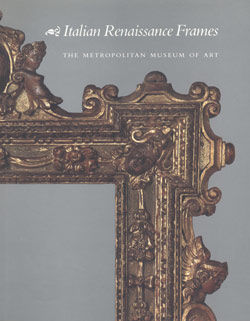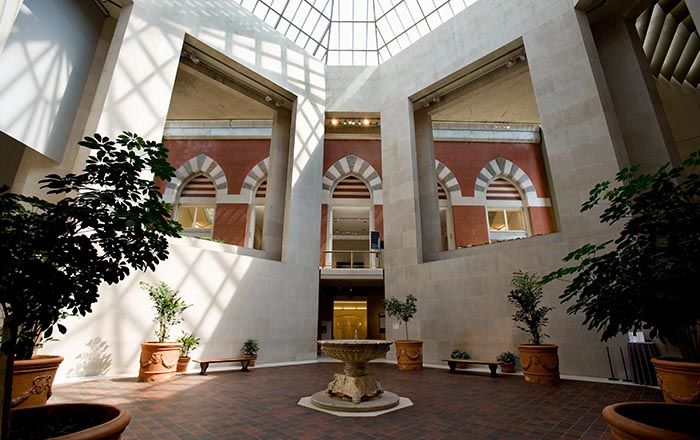Tabernacle frame
possibly del Tasso
A tabernacle frame is characterized by architectonic structural and decorative members, most often based on classical precedents. This type of frame grew increasingly popular during the fifteenth century, and more elaborate and inventive forms developed during the sixteenth century, after which it largely went out of fashion. An inscription warning against vanity, "Not beauty but truth is to be admired," appears in the cartouche below two griffins at the bottom edge of this finely carved frame that originally housed a mirror. Like most sixteenth-century Florentine mirrors, it originally included a sliding shutter to cover the glass: the slot through which the shutter passed in the right pilaster of the frame, has been filled with a modern wood repair.
During this period, walnut, a costly wood with a hard dense grain suitable for carving sharp detail, was primarily reserved for luxury objects. The manner in which the griffins on this frame were designed and carved suggests an attribution to the workshop of Marco and Francesco del Tasso, which for three generations was famous for its woodcarving.
Due to rights restrictions, this image cannot be enlarged, viewed at full screen, or downloaded.
This artwork is meant to be viewed from right to left. Scroll left to view more.



